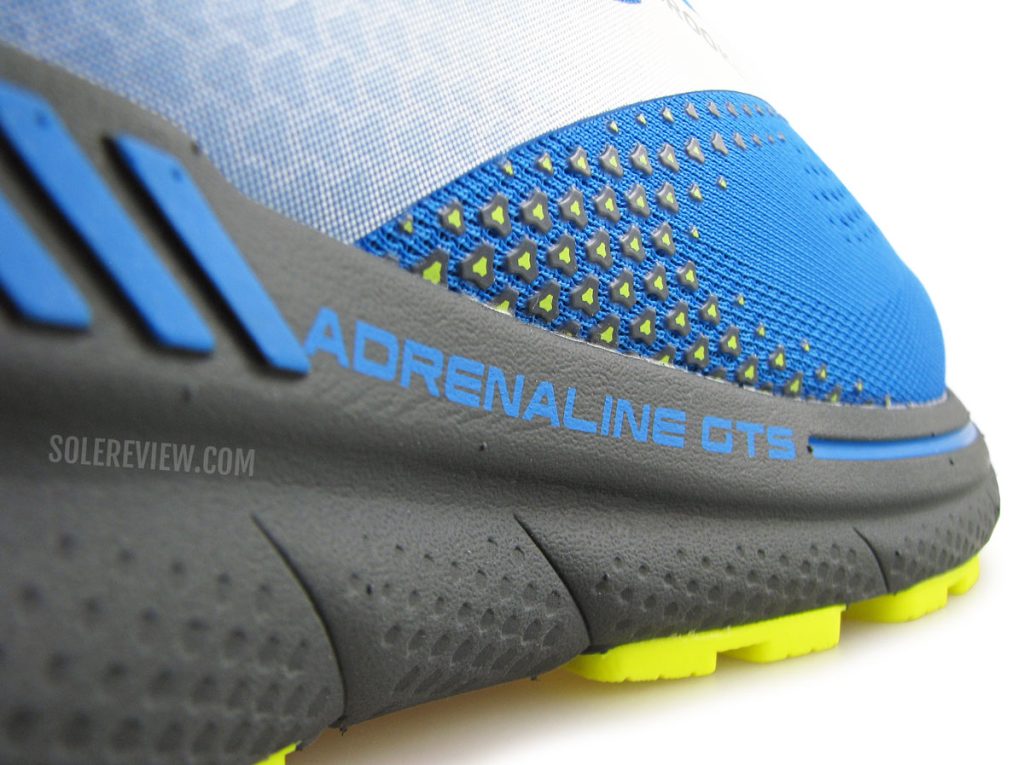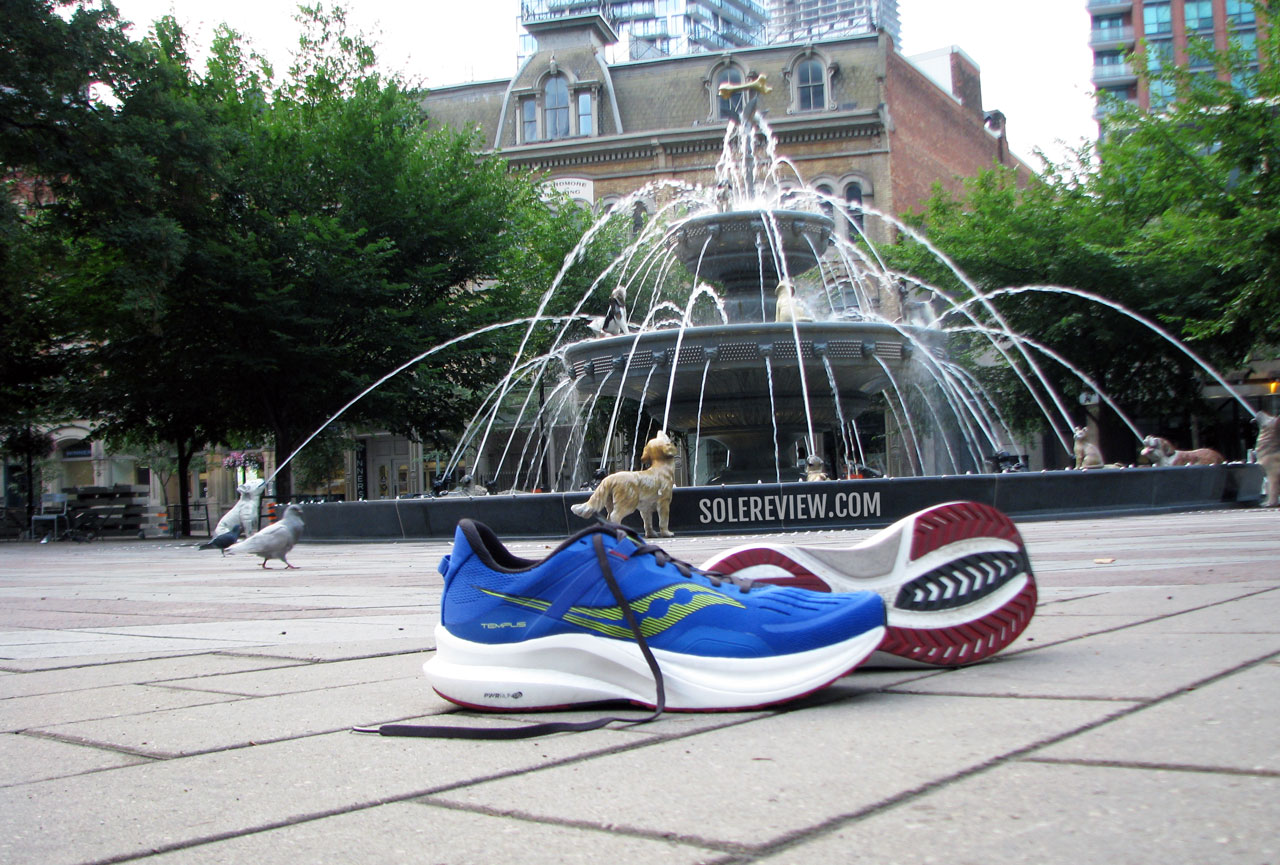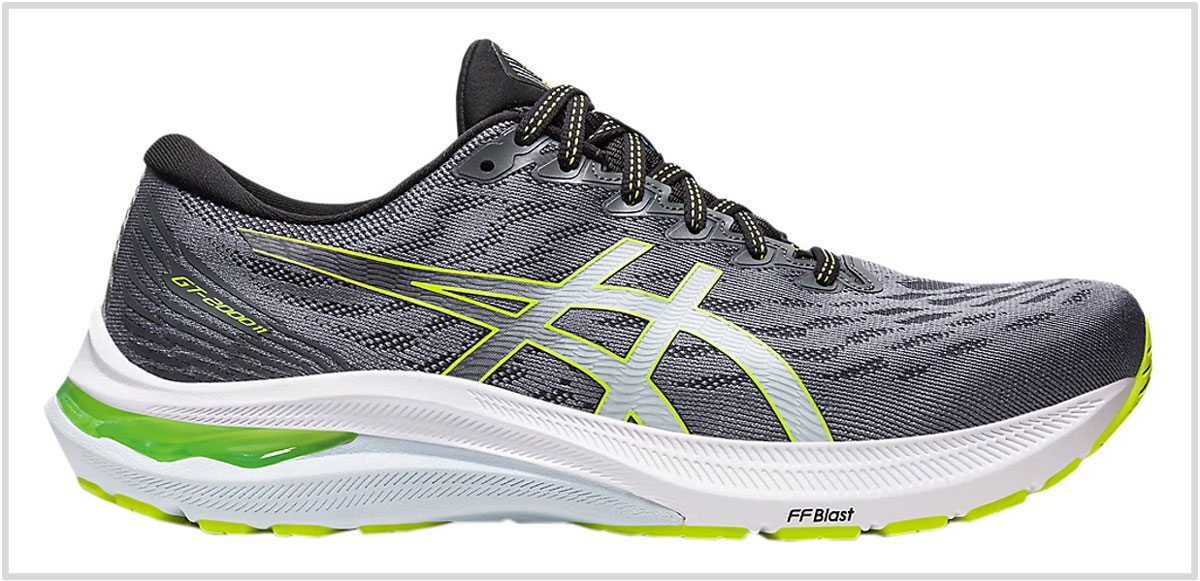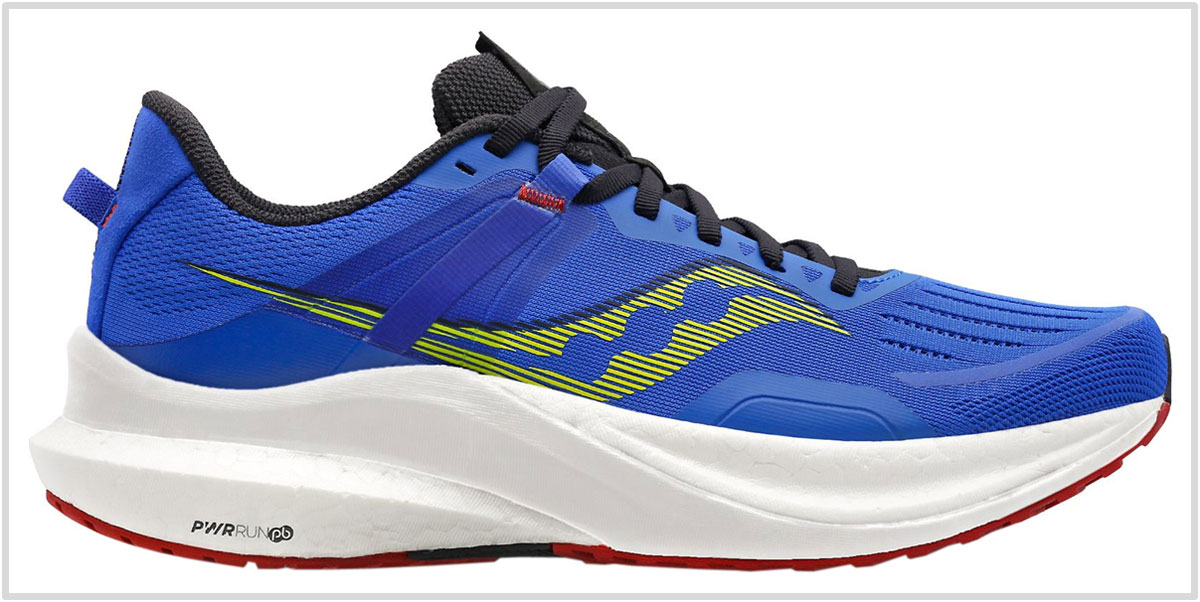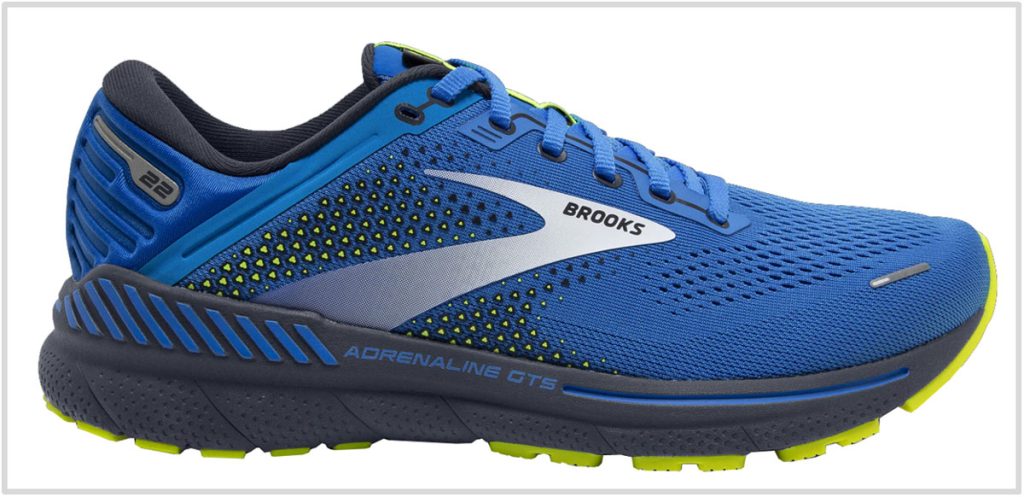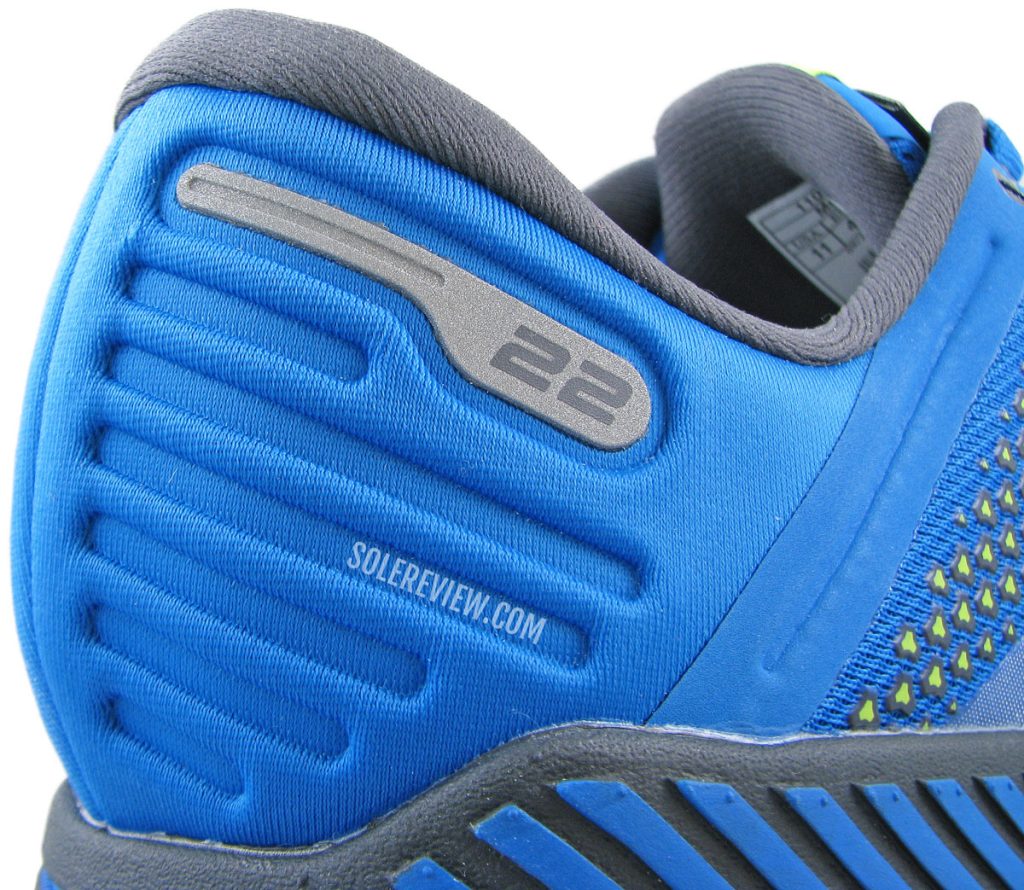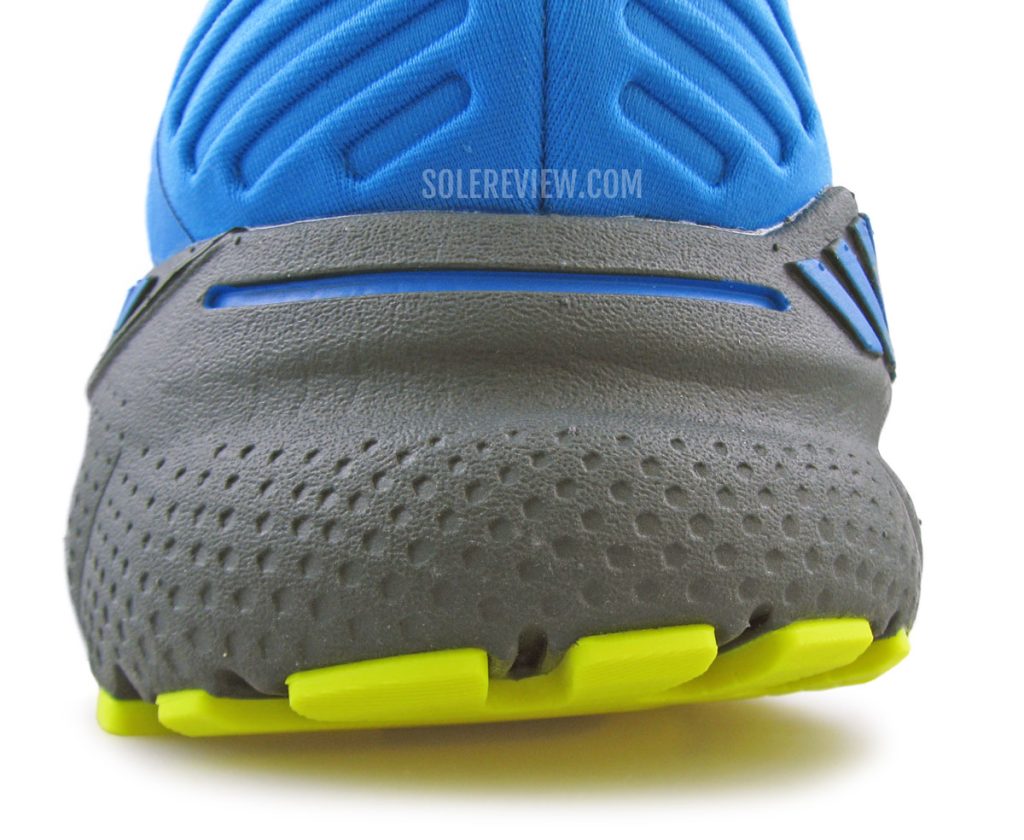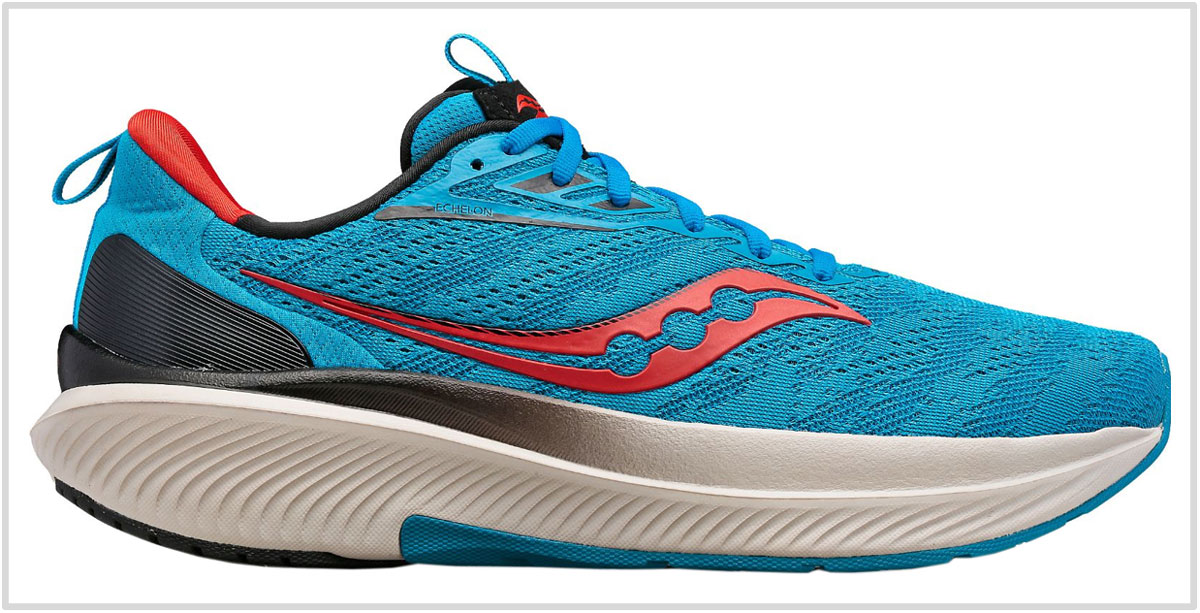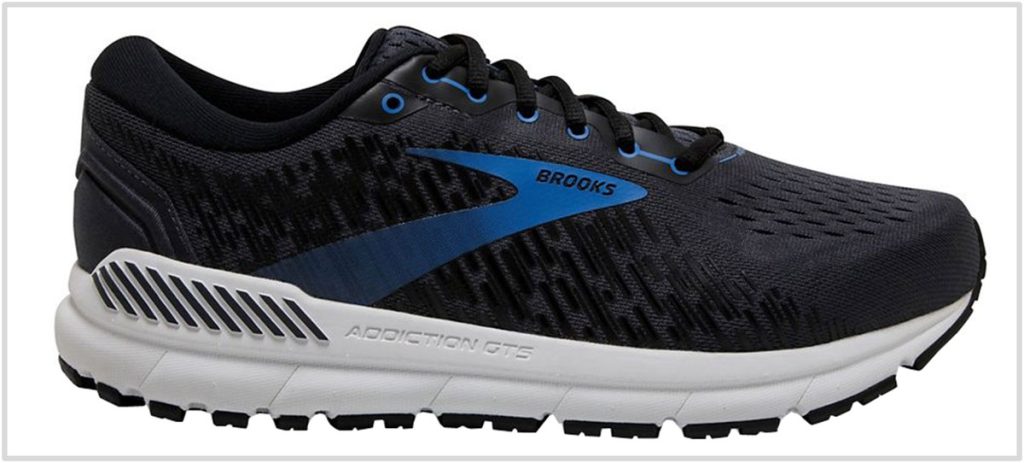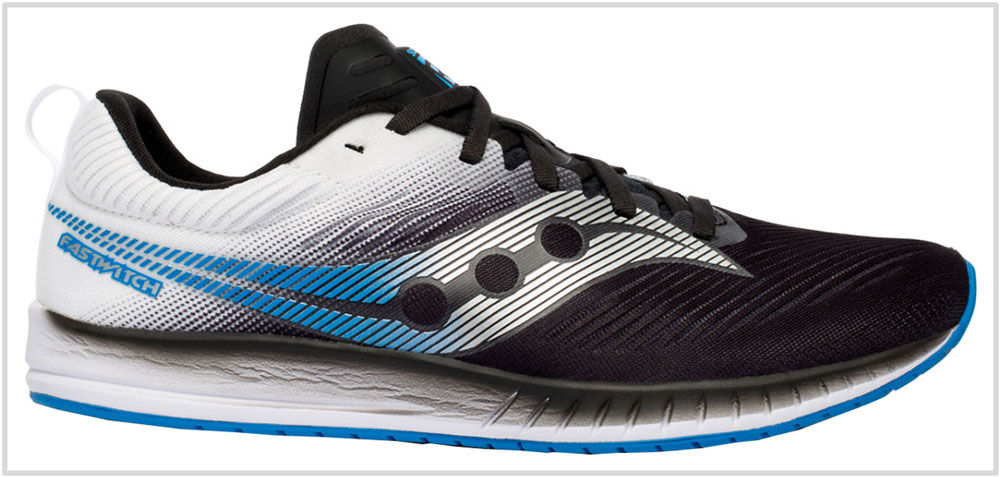This article has been updated with current models for January 2023. The Asics GT-2000 10 has been replaced with its updated version. The Asics GT-2000 10 has different stack heights for men and women.
In this product guide:
- 1. Factors to consider
- 2. Mild everyday support: Asics GT-2000 11
- 3. Most comfortable stability trainer: Saucony Tempus
- 4. Cushioned stability trainer: Asics Kayano Lite 3
- 5. Stability trainer with arch support: Brooks Adrenaline GTS 22
- 6. Stability shoe with a medial post: New Balance 860V13
- 7. Stability shoe with a firm ride: Saucony Guide 15
- 8. Max stability trainer: Saucony Echelon 9
- 9. Max stability trainer: Brooks Addiction GTS 15
- 10. Lightweight stability trainer: Asics DS-Trainer 26
- 11. Road racer with a medial post: Saucony Fastwitch 9
Why do conventional ‘stability’ shoes even exist? All brands that sell stability running shoes claim to correct inward foot roll, and how only ‘overpronators’ should wear stability running shoes.
We’ve spent a lot of time on this topic in the past, so we’ll skip that today. To cut a long story short, the medial post is backed by questionable pseudo-science.
Whether a runner prefers a stability shoe (or not) is a matter of personal preference. Some like the sensation of a firmer medial post under the foot, and that’s a good reason to buy such shoes.
Here, we’ll make the search process easier by sorting stability running shoes into three different sub-categories.
In the first category are the most popular stability shoes. These shoes are your daily trainers with mild support features. The medial post isn’t very intrusive, and in most cases, they are completely absent. Recently, popular models like the Brooks Adrenaline and Saucony Guide have been reintroduced without a medial post.
The second stability shoe category is ‘max support.’
Design features like an oversized midsole, ultra-wide outsole footprint, and a high weight are commonly found on such shoes. For this guide, we replaced the Beast 20 with the Addiction 15.
Lastly, there are lightweight trainers with a mild stability treatment. Those models are speed-friendly running shoes with a difference – the midsoles have a tiny medial post.
Daily stability trainers – mild support
1) Asics Gel GT-2000 11
The ‘11’ suffix in the shoe’s name indicates that the GT-2000 has been around for over a decade, but most of us forget that the GT-2160 existed long before the 2000s series.
What makes the GT popular is its balanced ride character. Here, everyday cushioning is blended with a barely noticeable medial post to create a ‘supportive neutral’ midsole.
What’s interesting is that Asics no longer advertises the medial post (aka the Duomax) on the GT-2000 11. This was also true for the GT-2000 10 – a shoe that we reviewed last year.
The plastic ‘Trusstic’ shank is also no longer a part of the midsole. However, the inner midsole is still firmer than the outer side, so a firmer foam wedge is co-molded into the midsole. Asics has renamed the medial post as ‘Litetruss’, that’s all.
The rest of the midsole has a generous amount of cushioning that’s delivered by the triple-density Flytefoam core. Consequently, the Asics GT-2000-11 is a supportive daily trainer that’s also capable of long-distance runs.
The comfortable upper has just the right fit proportions; the insides fit smoothly and true-to-size. The GT-2000 is also available in an optional wide (2E), extra-wide (4E), and a rugged ‘TR’ variant.
2) Saucony Tempus
We haven’t come across anything new in the stability running space in a very long time, so the Saucony Tempus comes as a breath of fresh air. Here’s our comprehensive review.
No, it doesn’t have a medial post, plastic footbridge, or raised sidewalls. Saucony does something better – it interlocks an EVA clamp with a full-length PEBA midsole. The wide flare of the said midsole also creates a stable base.

The inner side is supported with a solid EVA foam sidewall.

The EVA frame and Pwrrun PB (PEBA) midsole work together to deliver a satisfying blend of mileage-friendly comfort and stability. The EVA frame provides the necessary support without being intrusive or creating a cushioning bias.
The secure upper is excellent too, and that’s now a given on most recent Saucony shoes. The vented mesh upper breathes extremely well, and the soft lining makes the interiors comfortable.
3) Asics Kayano Lite 3
The Kayano Lite 3 doesn’t have the visible Gel or medial post that’s found on the Kayano 29.
Instead, the midsole cushioning and support comes from the high-volume Flytefoam midsole. The thick stack and insole produce a comfortable ride for high-mileage runs.
On the other hand, the wide midsole results in a planted underfoot feel without the blocky feel. The transition groove under the heel also keeps the weight centered.
Above the cushy midsole is a plush and secure upper that helps the foot make the most of the supportive ride. The Kayano Lite 3 has been redesigned with a brand-new midsole, but its overall ride character is similar to the Kayano Lite 1 and 2.
4) Brooks Adrenaline GTS 22
The new Adrenaline GTS 22 is like a firmer version of the Ghost 14, but with more under-arch support. The GTS 22 has a firmer ‘Guiderail’ (raised sidewalls) on the arch side, whereas the outer – and softer – Guiderail is made of the same material as the midsole.
Though there are specific design features that builds the GTS 22’s case as a stability shoe, they do not create a cushioning bias.

The Guiderails have never been perfect. Having said that, the Adrenaline is a supportive running shoe.
For example, the outer midsole has a groove running through its side, whereas the inner sidewall does not. The exposed midsole foam under the heel also has a slanted design that’s more supportive on the inner side.
Nonetheless, the Adrenaline is a cushioned and supportive-neutral running shoe that works for most use cases. Our full review is here.
The firmly cushioned midsole is suitable for daily runs and longer distances while offering adequate stability. The upper locks the foot down in upholstered comfort and a true-to-size fit. The laces could be longer, though.
5) New Balance Fresh Foam 860V13
The 860V13 still has a medial post, but this stability shoe doesn’t have a noticeable cushioning bias. The midsole has a balanced sidewall design, and the inner midsole has a raised edge (like the Brooks Guiderail) for support.
The Fresh Foam X compound on the 860V13 (and even the 880V12) is firmer than what the 1080V12 uses.
As a result, the 860V13 produces a cushioned ride that’s tinged with firmness. The soft blown rubber outsole offers padded forefoot landings and transitions; the rubber lugs under the heel and toe-box are harder for durability.
Like the neutral 880V12, the 860v13 is a dependable daily workhorse with a medial post.
Hugging the foot is a soft engineered mesh upper that’s offered in three optional widths – from a narrow (B) to extra-wide (4E).
6) Saucony Guide 15
What makes the Saucony Guide 15 is not a medial post, but a firm midsole that’s supported by a plastic stabiliser on the arch side. This plastic structure partially extends over the midsole for stability.
The Guide 15 behaves like a traditional stability running shoe with a cushioning bias, but packs a lot of supportive comfort for daily and long-distance runs. Our full review can be found here.
We’re headed towards the warmer season, so the Guide 15’s ultra-breathable upper is perfect.
On a side note, if you prefer a stability Saucony shoe with a medial post, we recommend the Omni 20.
Stability shoes – Maximum support:
1) Saucony Echelon 9
The Saucony Echelon 9’s $150 price is a hefty leap over the Echelon 8’s $130 retail tag, so what do we get in return?
For starters, the Echelon no longer looks like a shoe from the early 2000’s. Gone are the stitched upper overlays and blocky midsole design. The new outsole also uses less rubber than the V8, so all these changes make the Echelon 9 lighter by 2 ounces.
The ride is slightly softer than before, and there’s a orthotic-replaceable PU sockliner inside. The upper is also more comfortable, and more in line with modern Saucony models like the Triumph 20. The mesh is softer, and so are the tongue and heel padding.
The midsole uses Pwrrun foam – Saucony-speak for a firm EVA foam that’s also used on the Ride 15 and Guide 15. Though the Echelon 9 lacks the rock-stable ride of the Echelon 8, the wide midsole footprint creates supportive foundation.
For runners with wide feet, Saucony offers an optional wide sizing.
2) Brooks Addiction GTS 15
As far as we can tell, the medially-posted Addiction 14 has been replaced with the Addiction GTS 15.
The midsole no longer has a medial post, and instead has raised sidewalls on both sides. The inner ‘Guiderail’ is firmer than the outer side, and has a different density than the rest of the midsole. The Guiderails deliver a higher level of under arch-support than the 14.
Just like the Addiction 14, the Addiction GTS 15 has a wide midsole with a cushioned ride. The new midsole geometry makes the ride character very neutral, so the transitions and weight-loading feel very stable from the heel to forefoot.
A single-piece rubber outsole contributes to the ride stability with its dependable traction.
There’s plenty of room inside the comfortable upper, and that’s not a surprise given the wide midsole – both are usually correlated. The insole can be removed and replaced with an orthotic for customized stability.
The Addiction GTS 15 is offered in four widths, ranging from a B (narrow) to 4E (extra wide).
Stability shoes – lightweight support:
1) Asics Gel-DS Trainer 26
Our favorite lightweight stability trainer was completely redone in 2019, and the DS-Trainer 26 carries forward most of the good stuff.
The value proposition of the DS-Trainer 26 stays unchanged – it is an excellent trainer for fast training runs. The medial post doesn’t get in the way of the fast ride. Asics has done a great job of integrating the firmer-density wedge; it is barely noticeable.
The upper fits snug but extremely smooth on the inside. The knit mesh exterior has a soft hand feel and limits any superfluous layering.
The firm cushioning of the Flytefoam midsole helps build the pace during runs. A full-coverage outsole grips the road very well.
However, it’s worth mentioning that the DST 26 (and the 24 and 25) no longer have the aggressive dual-stencil lugs that were a part of the older outsoles.
Honestly, it’s a bit of a loss, but the traction is still excellent.
2) Saucony Fastwitch 9
The Fastwitch is a breathable road racer with a tiny medial wedge for support. If the idea of a 4 mm drop racer with mild stability features sounds appealing, then the Fastwitch 9 is worth considering.
The Fastwitch goes through a design clean-up for its 9th edition. The result is, ahem, a shoe that is closer to the New Balance 1500V6 than it is to the Fastwitch 8. So there you have it – another great road-racer with a tiny medial post.
Though the Fastwitch 9 bumps its retail price up by $10 to $100, it remains decent value for money.
And if you can find the New Balance 1500V6 on sale, that’s an option too.
Do you own any of these shoes? Improve this review by sharing your insights – submit a review here.

